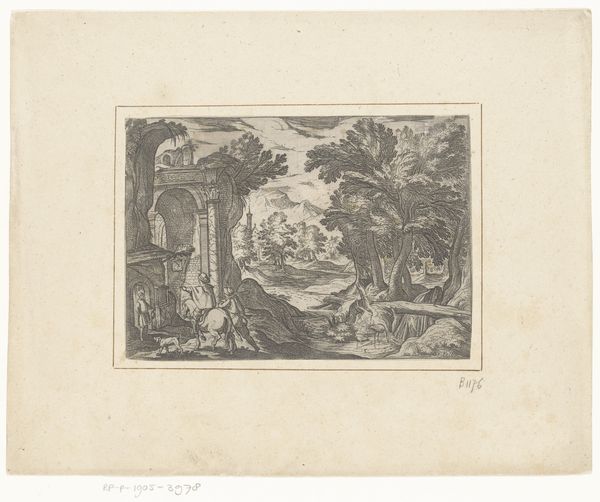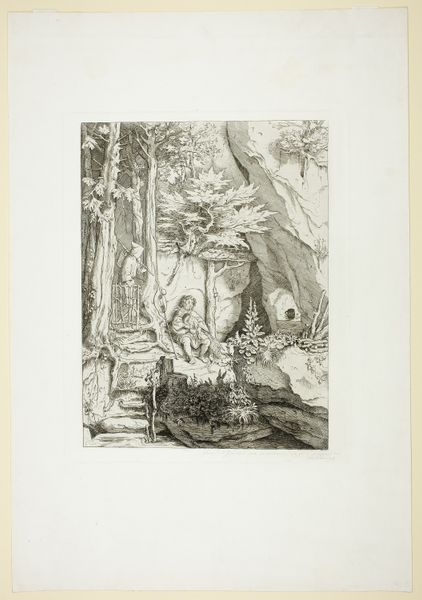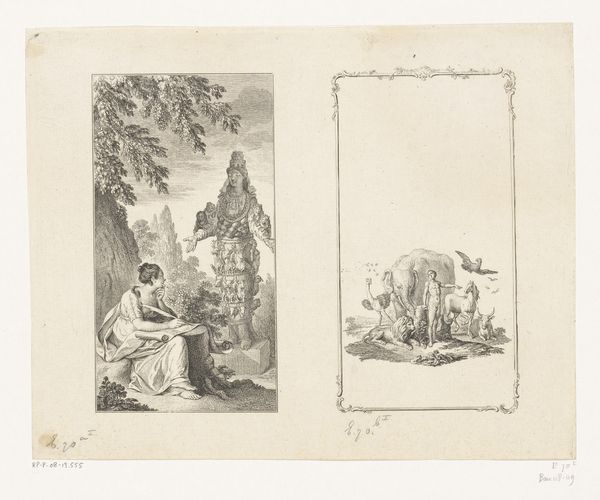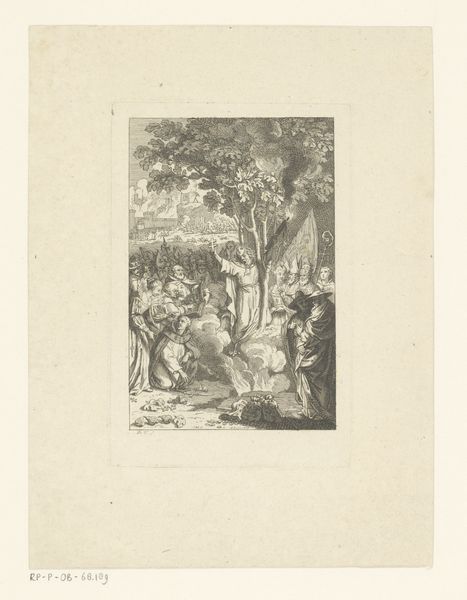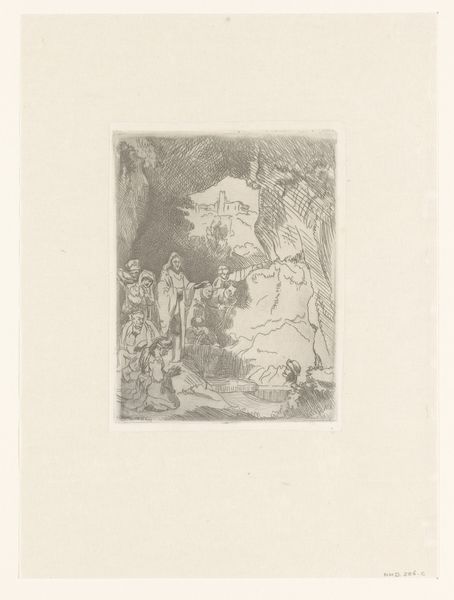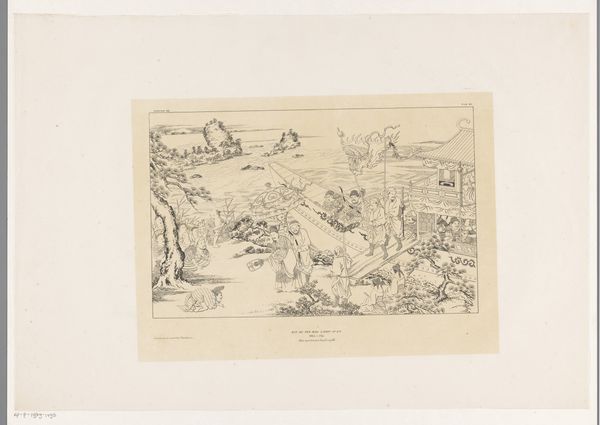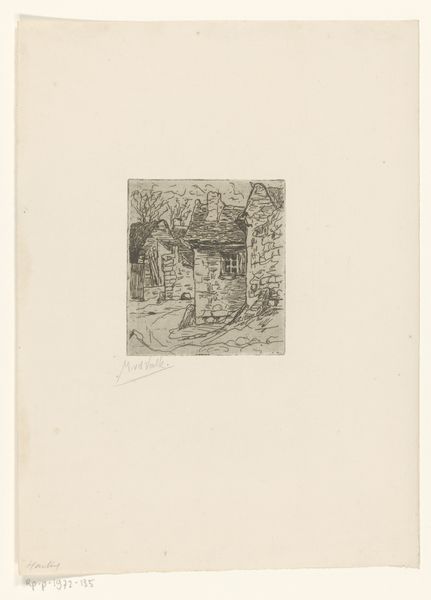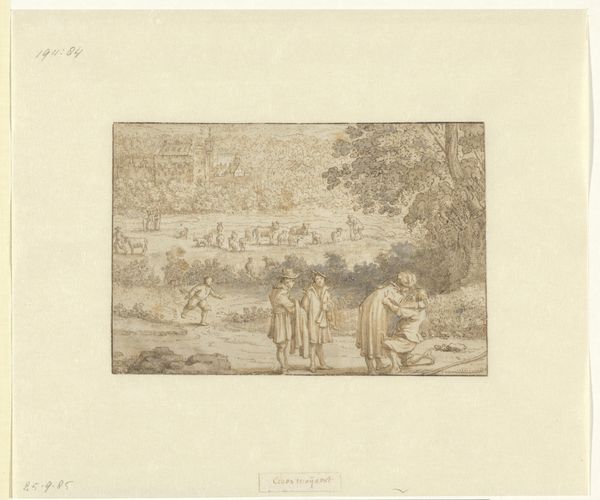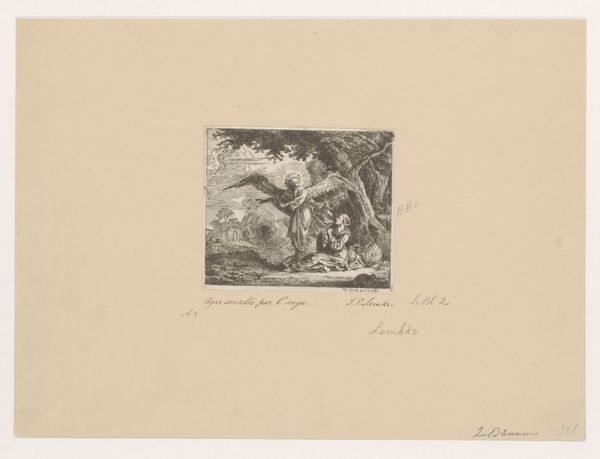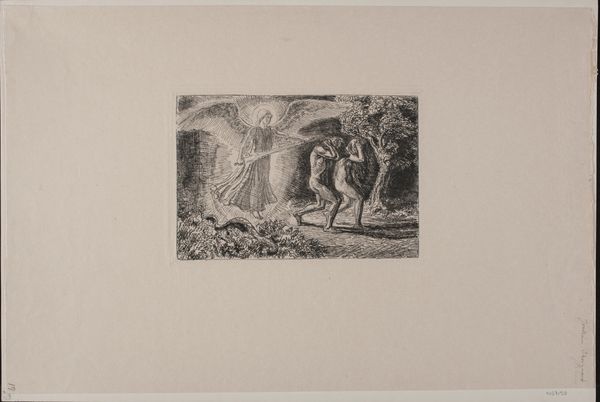
print, engraving
#
narrative-art
#
ink paper printed
# print
#
old engraving style
#
landscape
#
figuration
#
11_renaissance
#
italian-renaissance
#
engraving
Dimensions: height 179 mm, width 218 mm
Copyright: Rijks Museum: Open Domain
Editor: This is "Feniks," an engraving by Meester van de Dobbelsteen, dating back to between 1530 and 1560. The fine lines and details make the composition feel incredibly balanced. What do you notice in the use of form in this piece? Curator: Observe the geometric harmony employed. The animals' posture creates dynamic lines against the rigid, almost cubic form of the nest above. Do you note how the composition seems staged, almost theatrical, yet evokes the tranquility of Renaissance landscapes? Editor: I do see it now! I was also wondering, there's text included in the image—do you think it’s purely decorative, or does it hold a significant meaning regarding the form itself? Curator: An excellent question. Text and image operate as co-dependent semiotic structures. Here the inclusion of the script isn't merely ornamental, it adds a dimension to the iconographic structure as a whole. The form suggests that the viewer actively integrate verbal cues to decode the visual narrative. Notice too how it guides our eye across the composition. Editor: That’s really fascinating, I never thought of it that way. Now I realize how intertwined form and content are and that this piece’s meaning stems directly from their union. Curator: Exactly. By deconstructing its visual components, the formal structure, one starts to decode the layered, interconnected meaning that resonates with Renaissance ideology and imagery.
Comments
No comments
Be the first to comment and join the conversation on the ultimate creative platform.

